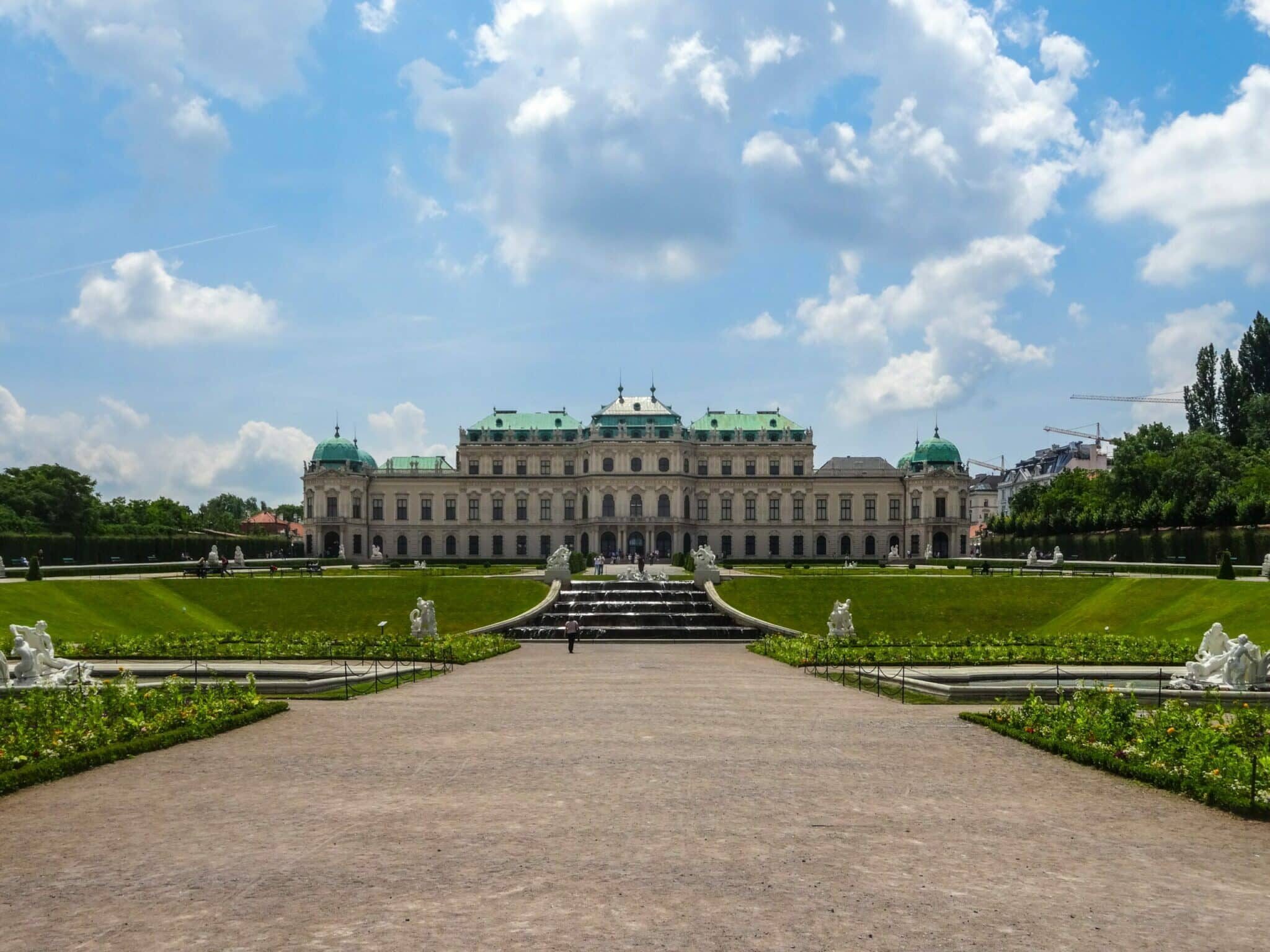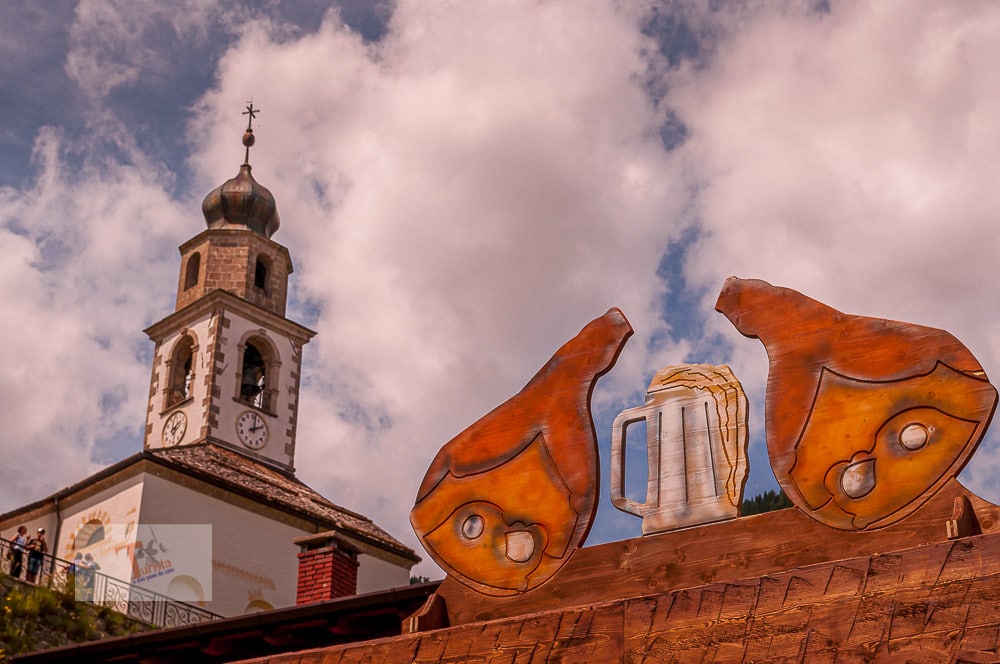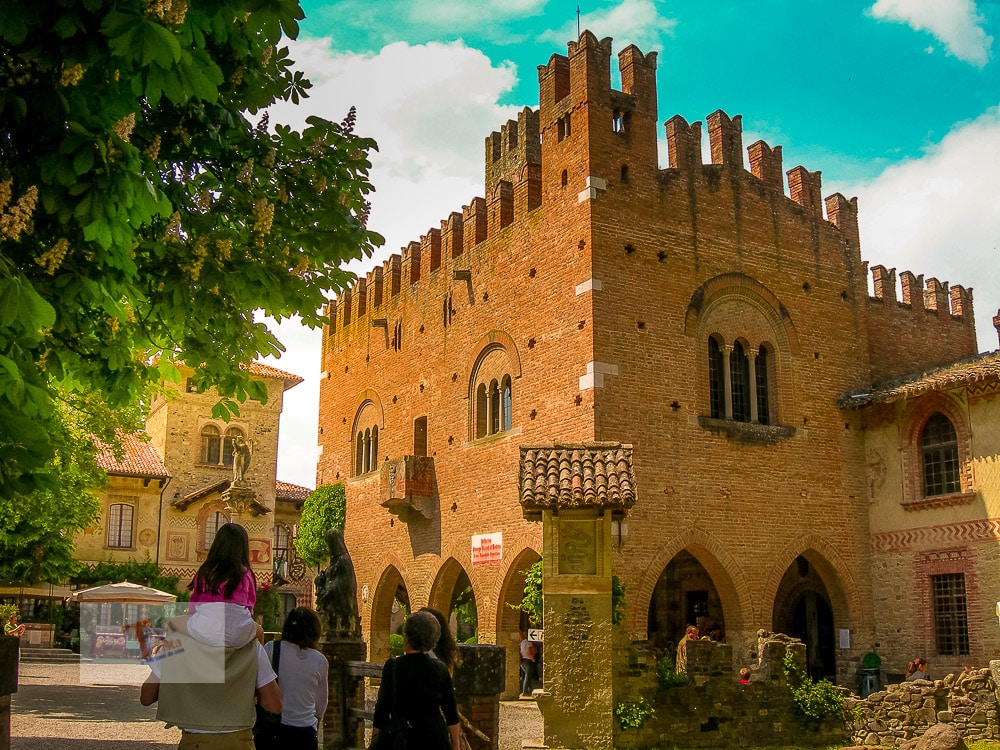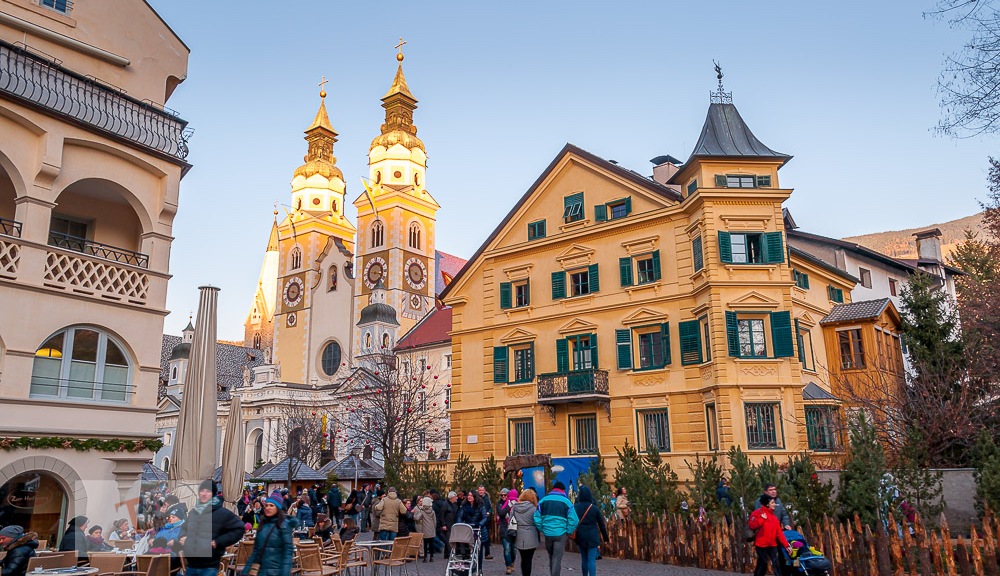Ancient buildings that mix history and art. From the historic center of Florence to the hills of the Tuscan countryside, a thematic itinerary winds its way to discover ancient and less ancient manors. An alternative idea to enjoy the beginning of autumn, walking around the city, or planning a trip out of town.
Fortezza da Basso 🏰
One of the city’s largest defenses is located in the heart of Florence, just a stone’s throw from Santa Maria Novella. Within the city’s fourteenth-century walls, Fortezza da Basso now hosts events, festivals, concerts, and a variety of initiatives that allow visitors to appreciate the massive architecture in a vibrant and dynamic setting.
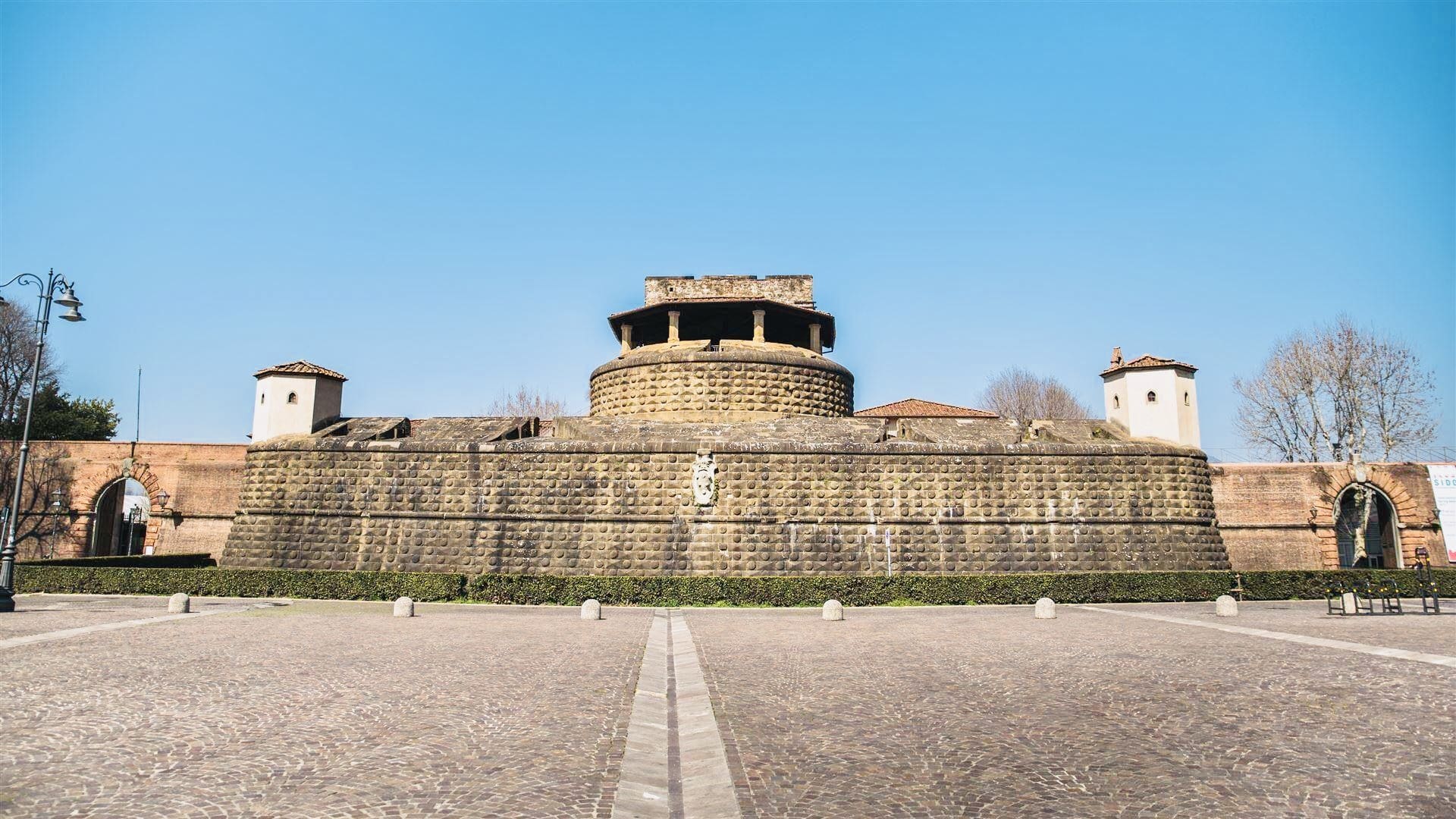
Fort Belvedere 🏰
It’s behind Palazzo Pitti and the Boboli Gardens in the Oltrarno. Fortezza Belvedere is a must-see location for admiring, as the name implies, one of Florence’s most magnificent vistas. With a single glimpse, you can view the entire city and its major monuments. A romantic walk at sunset is one of the city’s numerous romantic recommendations throughout the summer.

Castles of Belforte and Monteacuto 🏰
We travel to Bagno a Ripoli, a municipality in the Florentine hills. Several historic manors and villas may be found here. Among the numerous, don’t miss the chance to see the structures of the Belforte Castle and the Monteacuto Castle. The Belforte Castle, which is only visible from the outside and dates from the thirteenth century, has experienced various alterations throughout the ages but still has a very attractive position overlooking the Arno.
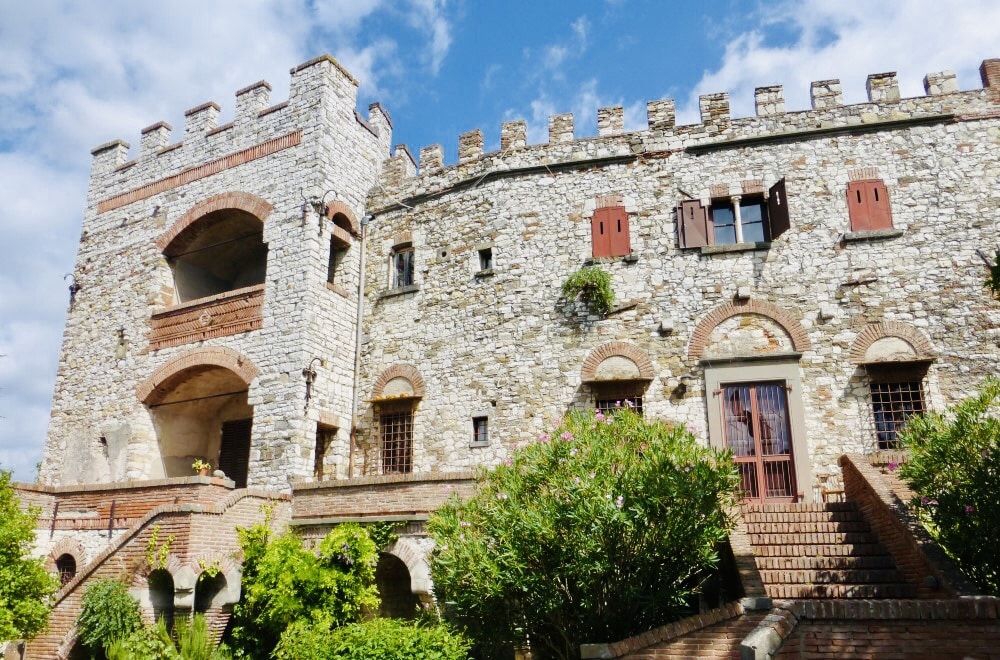
Nipozzano Castle 🏰
For those who wish to blend history with wine, this is the place to go. Between Pontassieve and Pelago, there is a little village with a mansion that has been preserved with its architecture and ideas from the year 1000. Perfect place for wine enthusiasts; don’t miss a visit to the cellars in addition to the castle’s chambers.

Acciaiolo Castle 🏰
Acciaiolo Castle is a castle in Acciaiolo, Italy. L’Acciaiolo, an aristocratic palace with intriguing battlements and turrets, is located in Scadicci, less than 10 kilometers from Florence. You may take a stroll in its courtyard, which is enclosed by formidable walls, and see the interior, which is rich in 17th and 18th-century murals. The opportunity is perfect to visit the village of Scandicci and enjoy a lunch in one of the many historic trattorias.

Calenzano Castle 🏰
The walled town of Calenzano stands out between Sesto Fiorentino and Prato. This historic village has all of the splendor of the medieval era, in addition to allowing you to wander along lanes covered by cypress trees. A spectacular view of the Tuscan hills may be had from the Castle.
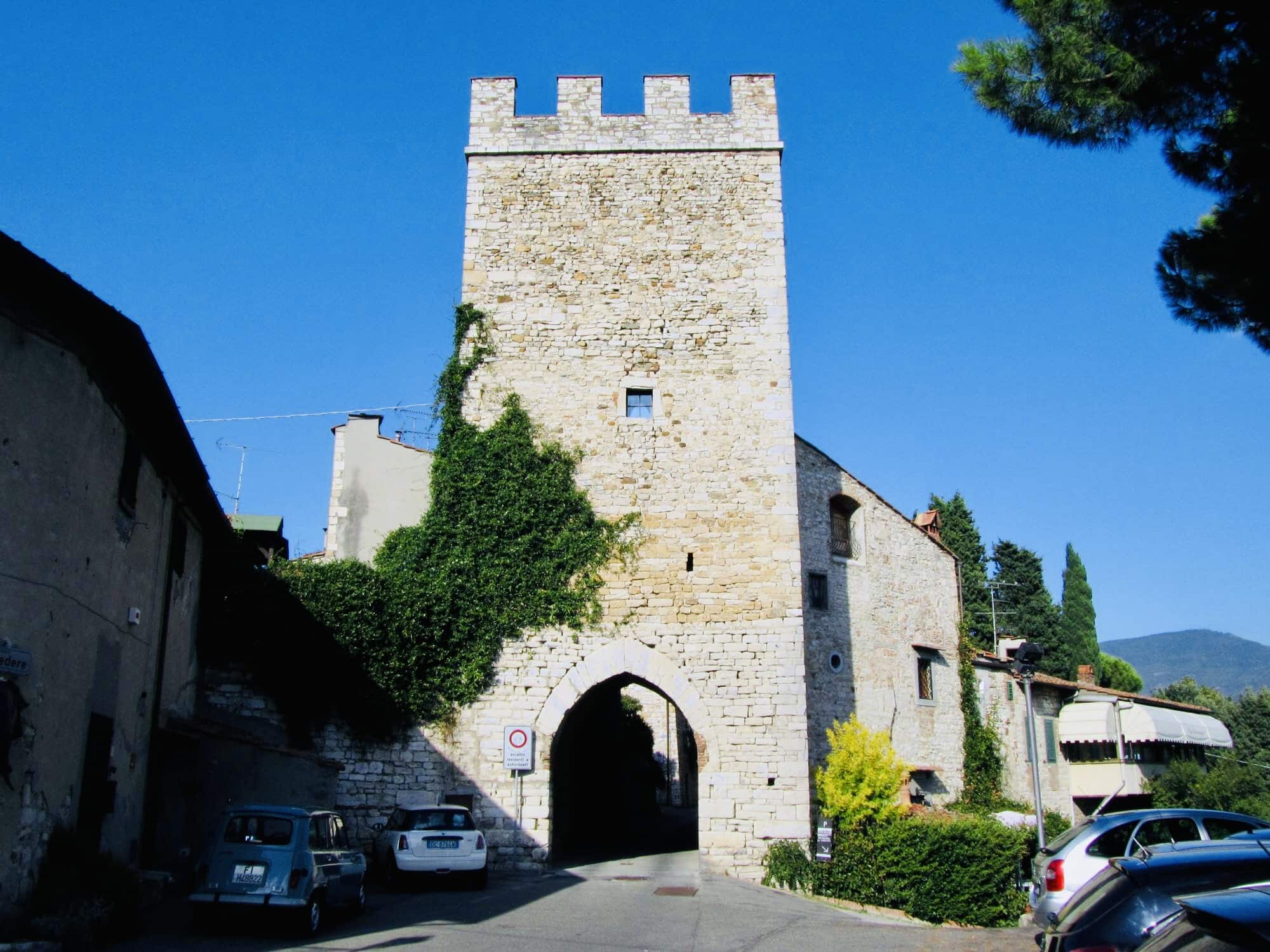
Brolio Castle 🏰
What kind of castle would be complete without a ghost story? It’s the same with the Castello di Brolio, which has ruled the valleys in the southern section of the Chianti Classico for over a thousand years, roughly 20 kilometers from Siena. Bettino Ricasoli’s spirit is said to prowl the castle on full moon evenings, according to local mythology. Some have reported seeing him walking alone or on a horse while being pursued by a group of hunting hounds. The baron’s bed was even discovered unmade numerous times after his death as if someone had slept in it. Yes, since the castle we see now is the product of Bettino Ricasoli’s nineteenth-century rebuilding, which was done according to the tastes of the period. The owner’s family still resides at the Castello di Brolio, unlike the other structures mentioned on this page.
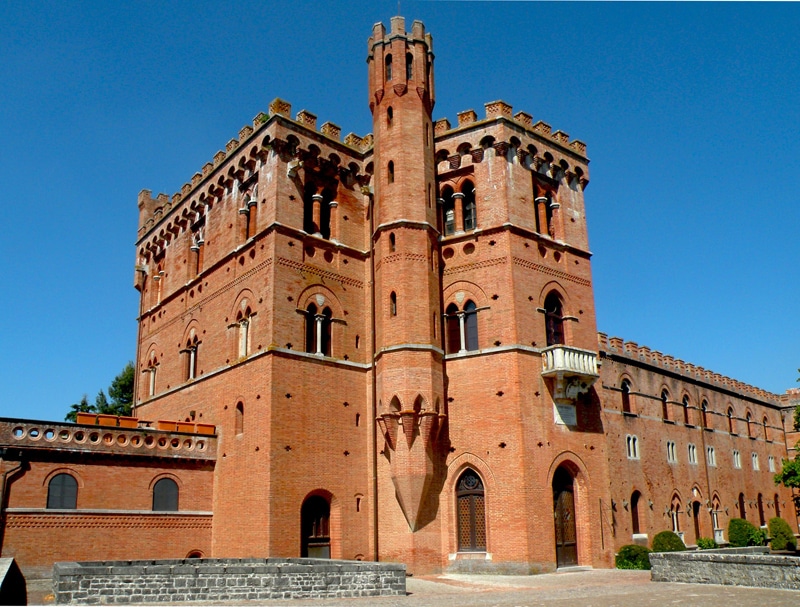
Malaspina Castle of Fosdinovo 🏰
The Malaspina di Fosdinovo Castle in the Lunigiana regions is so well kept that it is full of surprises. The interiors have been changed through time into an elegant noble mansion with frescoed chambers, despite the existence of towers and bastions on the front-facing the town. What is the unmissable? The Gaetano Bianchi-painted corridors, the chamber where Dante Alighieri resided, and the collection of coins, pottery, weapons, and torture implements. And, of course, the room where, according to tradition, the Malaspina Castle’s ghost dwells, the young Bianca Maria Aloisia, who is imprisoned here against her aristocratic paren’s will because she is in love with a stable boy. Protected in ancient times by a drawbridge, the entrance opens onto a small courtyard where the defensive guns are still located today.
The Torrigiani Malaspina marquises own the property, which now includes a museum, a modern art center, an artist and writer residency, and a modest bed & breakfast. Lounges, a Renaissance loggia with tables, and a panoramic tower with reading areas are available to visitors. The museum space provides visitors with an interdisciplinary journey that is suitable for people of all ages.
Workshops, medieval re-enactments, Dante’s readings, and trips led by historians and archaeologists are all held in the Castle. Lunches, dinners, or snacks at the Malaspina di Fosdinovo castle for parties can be topped off with medieval performances by costumed entertainers.
Forte Stella in Porto Ercole 🏰
Forte Stella is a star-shaped fort, as its name indicates. It’s six-pointed, and it’s in the middle of a vast quadrilateral enclosure with bastioned corners. We’re in the municipality of Monte Argentario, near Porto Ercole, and its location overlooking the Tyrrhenian Sea makes it even more wonderful.
Forte Stella was built by the Spaniards in the second part of the sixteenth century as a reference point for identifying the presence of the enemy. A real maxi watchtower that still permits you to see from the Argentario’s southern coast to the peninsula of Capo Linaro near Civitavecchia.
Because of its strategic location, it was able to communicate with the adjacent towers and defenses that dot the Argentario promontory via visual signals. In a nutshell, this was an invincible defense system capable of exploiting its strategic location. Today, taking children to Forte Stella entails wandering along the walls’ paths and viewing the same sights that kept the Spaniards on their toes. And if you’re lucky, you might be able to view one of the many modern art exhibitions held just within this structure.
Poppi Castle 🏰
The Castle of Poppi is an important stop on the exciting quest to discover the Middle Ages’ iconic locations (or Castello dei Conti Guidi). We are in the province of Arezzo, but this edifice, which has remained virtually unchanged from its beginnings until now, with the exception of a restoration intervention to repair damage to the bell tower caused by lightning, is the emblem of the whole Casentino. When we talk of castles and battlements, residential structures where the lords of the period resided, and Middle Ages emblems, the image that comes to mind is of the stone construction of the Castle of Poppi.
The urge of youngsters to get inside and gaze within is always great because of its form, which looks virtually suspended in the emptiness to those who view it from below. It’s also well-placed because the numerous noble coats of arms on the ground-floor internal walls allude to a world of courts and privileges that excite the imagination, to the point of letting it run wild in the Salone delle Feste, where the Counts Guidi hosted banquets and shows and which is still used for the most important and prestigious appointments today.
It is impossible to leave the Poppi Castle without paying a visit to the Rilliana Library, which houses a collection of 25,000 antique books. Instead, to reach the belfry at the pinnacle of the castle tower, ascend 104 stairs one by one. Is it worthwhile to stroll them with kids? Yes, to uncover the antique and unusual clock mechanism and, once at the top of the tower, to gaze out over the magnificent vistas of the Casentino.
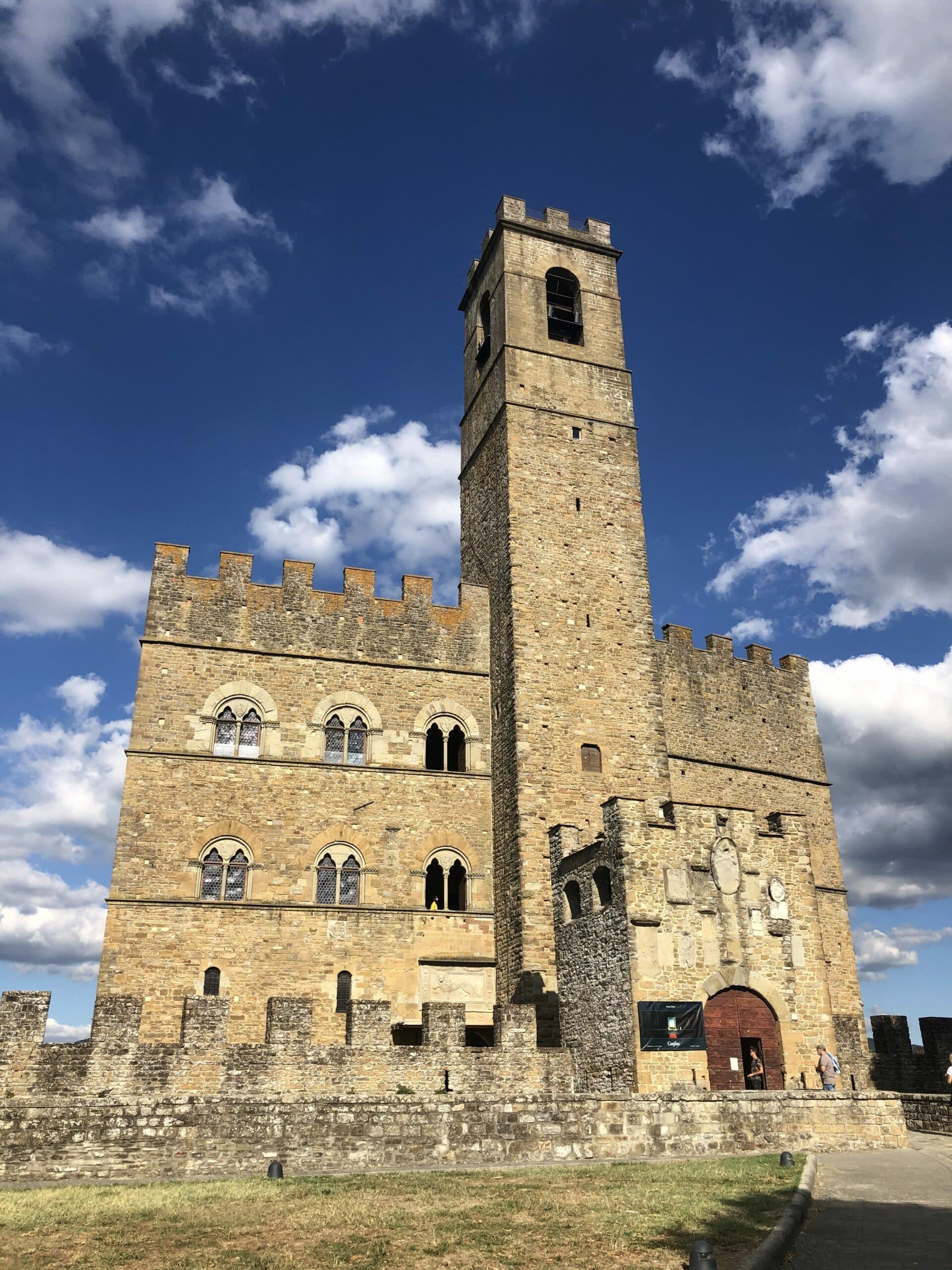
Gargonza Castle 🏰
Something amazing happens at Castello di Gargonza in Monte San Savino, in Val di Chiana, in the province of Arezzo, since youngsters get to witness a fairy story. One of the actual ones, in which you are the protagonists rather than the audience. One of those places where you can walk inside a single wall, see how deep the well is, gaze at old buildings, and ask your mother what year we’re in. Gargonza is genuine and original, as well as quite old and beautifully preserved. Even in the smallest things and at the table. The La Torre di Gargonza Restaurant was built from old agricultural machinery and a carpentry shed just beyond the village’s boundaries. Entirely renovated with the windows of the new panoramic room, it can accommodate up to 170 seats.
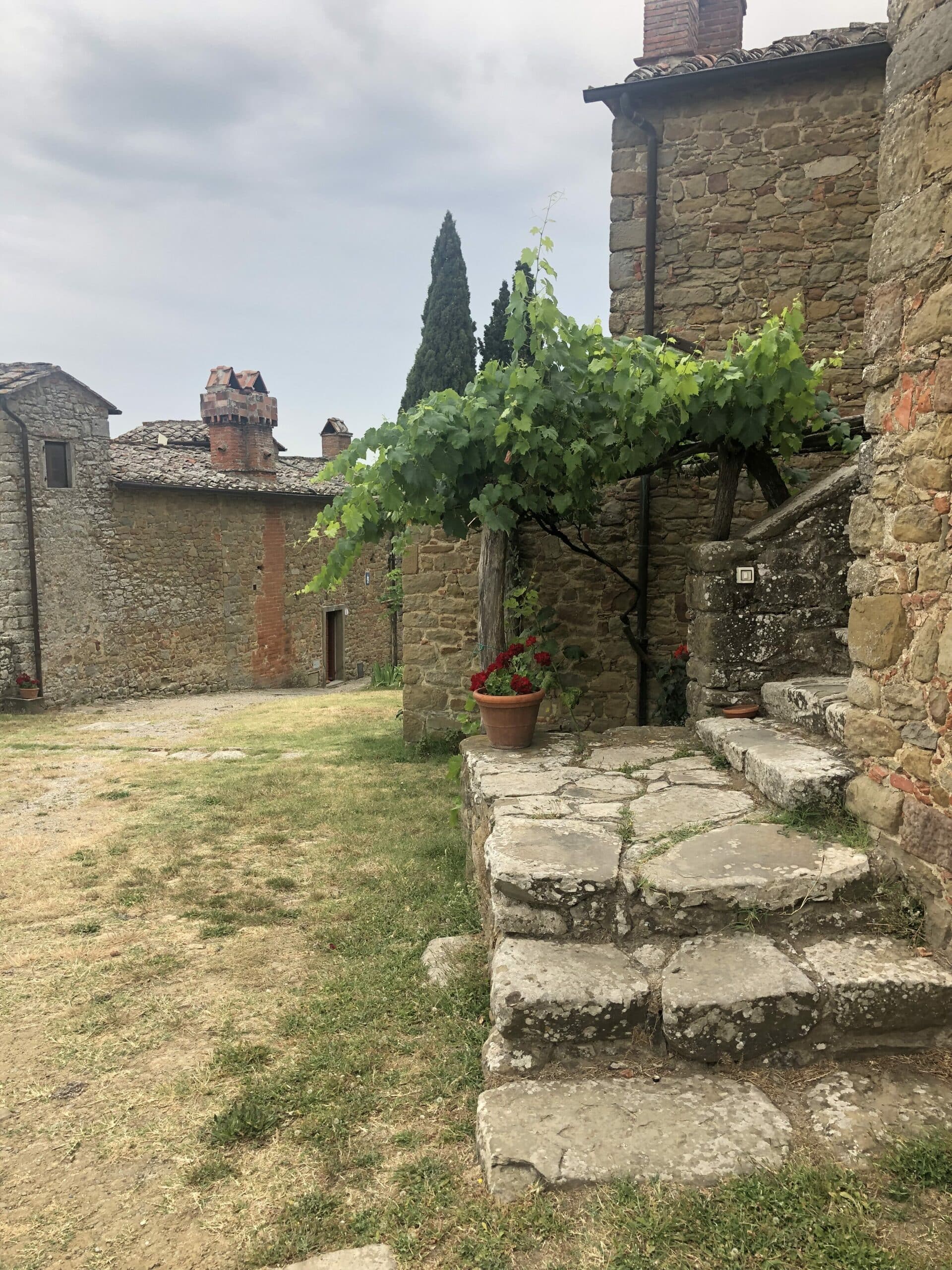
Volpaia Castle 🏰
Volpaia, a fortified town of medieval antiquity in Radda in Chianti, has a sense of purity and beauty. And it’s because the castle’s owners, the Mascheroni Stianti family, have preserved and renewed historic traditions day after day. It indicates that the area’s agricultural vocation, which is tied to wine, oil, and vegetable gardens, is treated with care, passion, and commitment.
As a result, families with children who visit the Volpaia Castle and elect to stay for one or more days in one of the antique restored and equipped farmhouses – one on the outskirts of the hamlet and the other two kilometers from Volpaia surrounded by nature.- they find an ideal world: the tranquility of the countryside on one side, many beautiful stories to be told on the other.
The Florentine Della Volpaia family is remembered not only for linking their name to this settlement, but also for being sundial and armillary sphere painters and makers. The planetary clock at Palazzo Vecchio in Florence was built by Lorenzo degli della Volpaia, a friend of Leonardo da Vinci.




